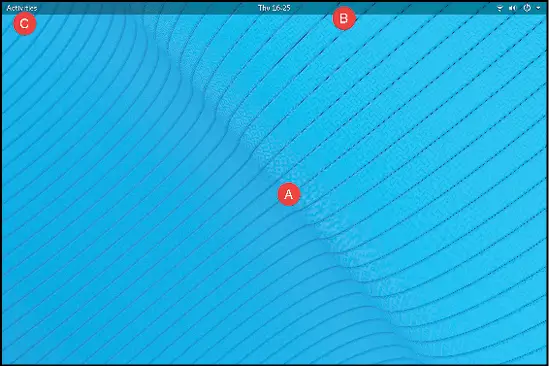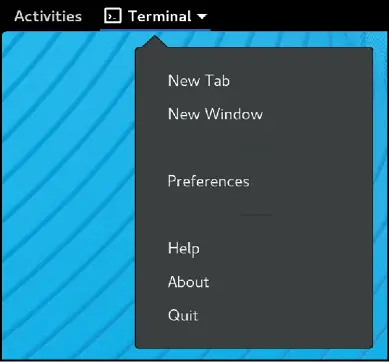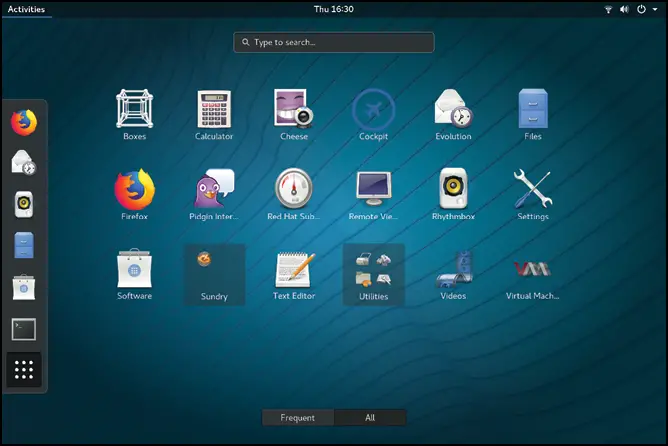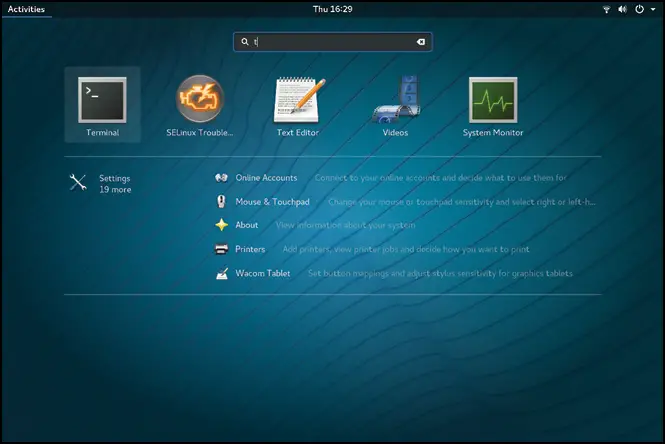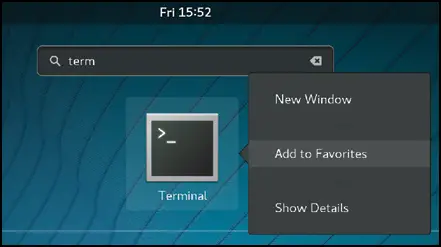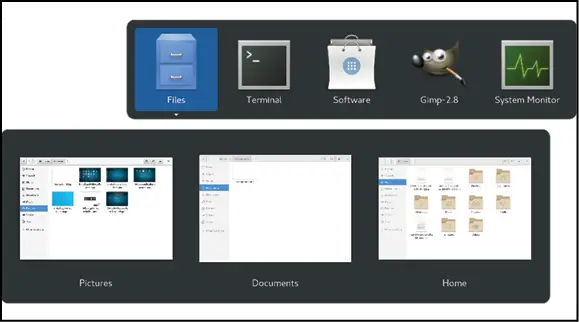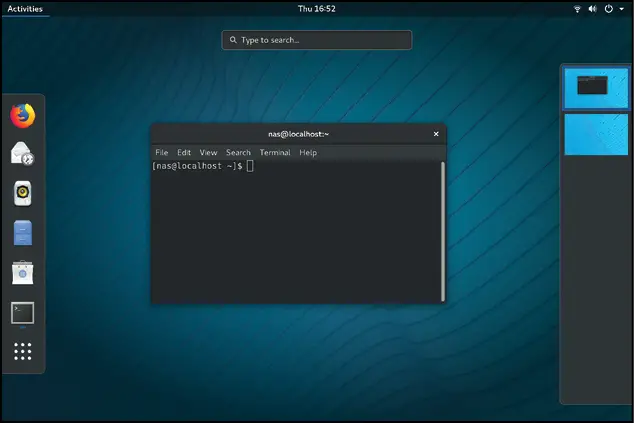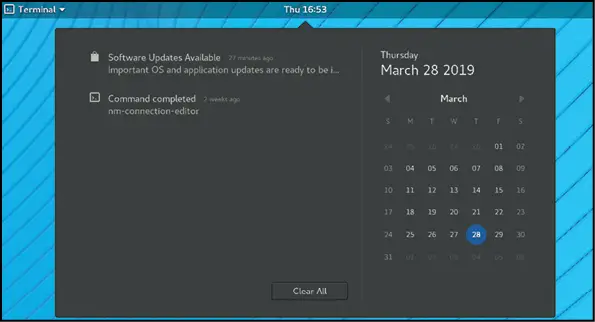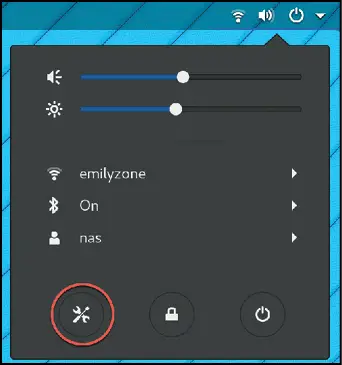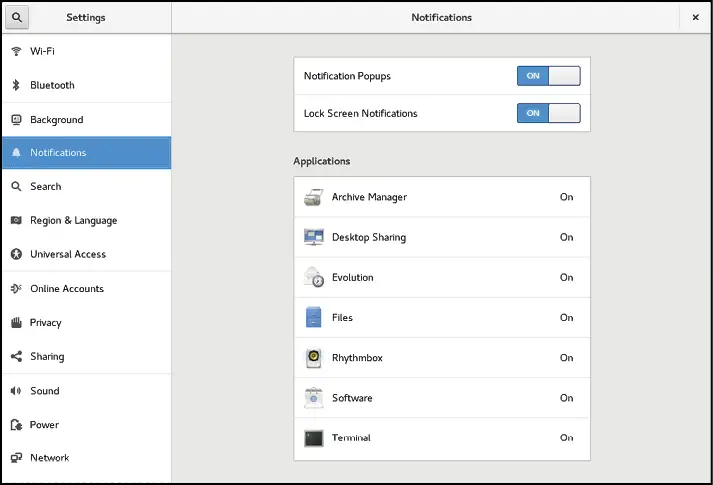Difference between revisions of "A Guided Tour of the RHEL GNOME 3 Desktop"
(Created page with "{{#pagetitle: A Guided Tour of the RHEL 8 GNOME 3 Desktop }} <table border="0" cellspacing="0" width="100%"><tr> <td width="20%">Allocating Windows Disk Partitions to RHEL|P...") |
(No difference)
|
Revision as of 18:48, 9 June 2019
| Previous | Table of Contents | Next |
| Allocating Windows Disk Partitions to RHEL 8 | An Overview of the RHEL 8 Cockpit Web Interface |
|
You are reading a sample chapter from the Red Hat Enterprise Linux 8 (RHEL 8) Essentials book. Purchase a full copy of Red Hat Enterprise Linux 8 (RHEL 8) Essentials in eBook ($9.99) or Print ($36.99) format Red Hat Enterprise Linux 8 Essentials Print and eBook (ePub/PDF/Kindle) editions contain 31 chapters and over 250 pages |
Red Hat Enterprise Linux 8 includes the GNOME 3 desktop environment. Although lacking the complexity of Windows and macOS desktops, GNOME 3 provides an uncluttered and intuitive desktop environment that provides all of the essential features of a windowing environment with the added advantage that it can be learned quickly.
In this chapter, the main features of the GNOME desktop will be covered together with an outline of how basic tasks are performed.
Installing the GNOME Desktop
If either the Workstation or Server with GUI software configuration was selected during the RHEL 8 installation process, the GNOME desktop will already be installed and will automatically launch each time the system starts.
If any other software configuration was selected during the RHEL 8 installation process, the GNOME desktop will not have been included in the packages installed on the system. On server-based systems without a display attached, the idea of installing a graphical desktop environment may seem redundant. It is worth noting, however, that remote access to the GNOME desktop is also possible so, even on so called headless servers (i.e. servers lacking a monitor, keyboard and mouse) it may still be beneficial to install the GNOME desktop packages. The topic of establishing remote desktop access will be covered in detail in the “RHEL 8 Remote Desktop Access with VNC” chapter of this book.
If the installation configuration did not include the GNOME desktop, it may be installed at any time using the following command:
# dnf groupinstall "Workstation"
Once the installation is complete, the desktop environment may be launched from the command prompt on a monitor as follows:
$ startx
An Overview of the GNOME 3 Desktop
The screen shown in Figure 6-1 below shows the appearance of a typical, newly launched GNOME desktop session before any other programs have been launched or configuration changes made.
Figure 6-1
The main desktop area (marked A) is where windows will appear when applications and utilities are launched. Unlike other desktop environments, it is not possible to drag and drop files or applications onto the desktop, providing a clean and uncluttered workspace.
The bar at the top of the screen (B) is called the top bar and includes the Activities menu (C), the day and time and a collection of buttons and icons including network status, audio volume, battery power and other status and account settings. The application menu for the currently active application running on the desktop will also appear in the top bar. Figure 6-2, for example, shows the application menu for the Terminal program:
Figure 6-2
Launching Activities
Applications and utilities are launched using the Activities overview dashboard (referred to as the dash) which may be displayed either by clicking on the Activities button in the top bar or pressing the special key on the keyboard. On Windows systems this is the Windows key, on macOS the Command key and on Chromebooks the key displaying a magnifying glass.
When displayed, the dash will appear as shown in Figure 6-3 below:
Figure 6-3
By default the dash will display an icon for a predefined set of commonly used applications and will also include an icon for any applications that are currently running. If the application is currently running it will appear with a bar marker beneath the icon.
To launch an application, simply click on the icon in the dash.
To find an application not included on the dash, one option is to select the bottom most icon (the square comprising nine dots) to display a browsable list of applications as shown in Figure 6-4:
Figure 6-4
Note that the list can be filtered to display all applications or only those used frequently by selecting the buttons at the bottom center of the screen. It is also important to be aware that some entries in the list are actually folders holding addtional applications. In the above screenshot, for example, the Utilities entry provides access to a collection of other tools such as the system monitor and disk management tools and the Terminal window application.
An alternative to browsing the applications is to perform a search using the search bar which appears when the dash is displayed as shown in Figure 6-5:
Figure 6-5
As text is typed into the search box, the list of possible matches will be refined.
To add an application to the dash for more convenient access, locate the icon for the application, right-click on it and select the Add to Favorites menu option:
Figure 6-6
To remove an app from the dash, repeat these steps, this time selecting Remove from Favorites.
Managing Windows
As with other desktop environments, applications run on GNOME in windows. When multiple application windows are open, the Super + Tab keyboard shortcut will display the switcher panel (Figure 6-7) allowing a different window to be chosen as the currently active window:
Figure 6-7
If a single application has more than one window open, the switcher will display those windows in a second panel so that a specific window can be selected:
Figure 6-8
To cycle backwards through the icons in the switcher, use the Shift + Tab keyboard shortcut.
To maximize a window so that it fills the entire screen click the title bar and drag the window to the top of the screen. To return the window to it’s original size, click on the title bar and drag downwards. Alternatively, simply double-click on the title bar to toggle between window sizes. Similarly, dragging a window to the left or right side of the screen will cause the window to fill that half of the screen.
Using Workspaces
The area of the screen where the application windows appear is referred to as the workspace and GNOME 3 allows multiple workspaces to be configured. To create a new workspace, display the Activities overview and move the mouse pointer to the far right of the screen to display the workspaces panel (Figure 6-9):
Figure 6-9
To switch to a different panel, simply select it from the list. To move a window from one workspace to another, display the workspaces panel and drag and drop the application window (either the actual window from the current workspace or the thumbnail window in the workspaces panel) onto the destination workspace. When a window is added to a blank workspace, another blank workspace is added to the workspace panel, allowing multiple workspaces to be created.
To remove a workspace either close all the windows on that workspace, or move them to another workspace.
Calendar and Notifications
When the system needs to notify you of an event (such as the availability of system or application updates, a popup panel will appear at the top of the workspace. Access to the calendar and any previous notifications is available by clicking on the day and time in the top bar as shown in Figure 6-10:
Figure 6-10
Desktop Settings
To access the Settings application, click on the down arrow on the far right of the top bar and select the button with the tools icon as highlighted in Figure 6-11:
Figure 6-11
The Settings application provides a wide range of options such as Ethernet and Wi-Fi connections, screen background customization options, screen locking and power management controls and language preferences. To explore the settings available in each category, simply select an option from the left-hand panel in the Settings window:
Figure 6-12
The menu shown in Figure 6-11 above also includes options to switch user, adjust audio volume, change to a different Wi-Fi network and to log out, restart or power off the system.
Summary
RHEL 8 includes the GNOME 3 desktop environment which may either be included during the initial installation or installed later using the dnf group package installation feature. Unlike most other desktop environments, GNOME 3 is intended to provide a clean and easy to use windowing user interface. Key areas of the GNOME 3 include the top bar, Activities overview and dash. In addition, GNOME 3 supports multiple workspaces keeping running applications organized and the screen uncluttered. A variety of configuration options is also available within the Settings app including desktop background settings, audio, network configuration and Wi-Fi network selection.
|
You are reading a sample chapter from the Red Hat Enterprise Linux 8 (RHEL 8) Essentials book. Purchase a full copy of Red Hat Enterprise Linux 8 (RHEL 8) Essentials in eBook ($9.99) or Print ($36.99) format Red Hat Enterprise Linux 8 Essentials Print and eBook (ePub/PDF/Kindle) editions contain 31 chapters and over 250 pages |
| Previous | Table of Contents | Next |
| Allocating Windows Disk Partitions to RHEL 8 | An Overview of the RHEL 8 Cockpit Web Interface |




